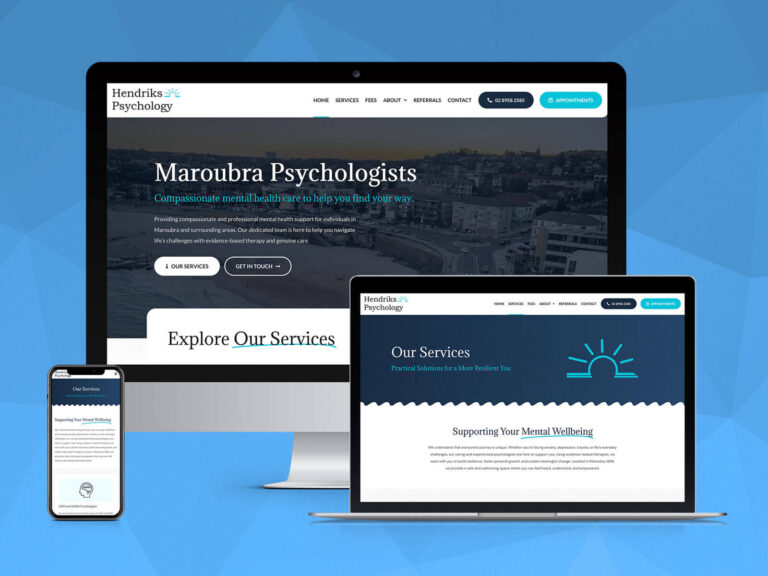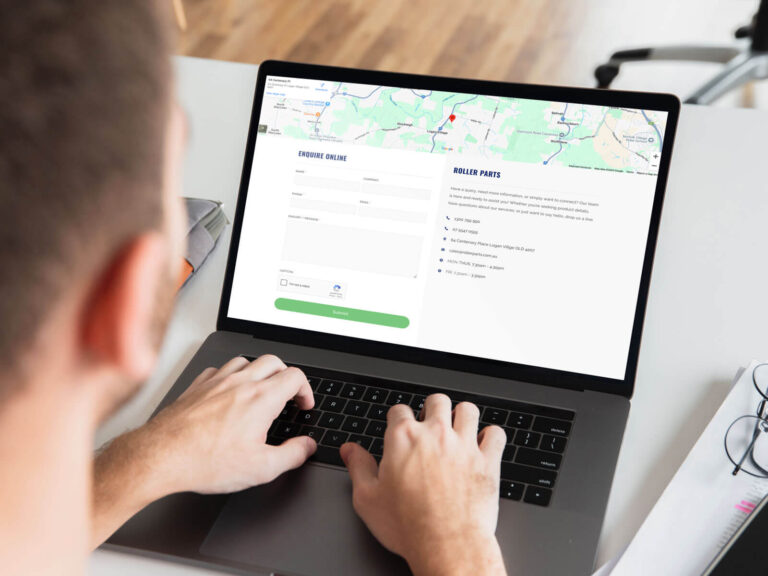With WordPress accounting for over 43% of websites currently in existence, keeping your website up to date is always an essential part of a successful online presence. This popularity makes WordPress a prime target for hackers and cyber criminals. As a WordPress website owner, it’s important to take steps to secure your site and protect it from potential threats.
Below are 10 tips to help strengthen WordPress security:
1. Keep your WordPress software and plugins up to date
Keeping your WordPress software and plugins up to date is crucial for the security of your website. WordPress releases updates on a regular basis to fix bugs and vulnerabilities that may have been discovered. These updates often include security patches that help protect your site from potential threats. It is important to install these updates as soon as they are available to ensure that your site is protected.
In addition to updating the WordPress core software, it is also important to update your plugins. Plugins are pieces of software that extend the functionality of your website. Like the WordPress core software, plugins may also have vulnerabilities that need to be patched. It is important to regularly check for updates to your plugins and install them as soon as they are available.
Failing to keep your WordPress software and plugins up to date can leave your site vulnerable to attacks. Hackers may be able to exploit known vulnerabilities to gain unauthorized access to your site or inject malware. By keeping your software and plugins up to date, you can help protect your site from these types of threats.
2. Use strong, unique passwords
Using strong, unique passwords for all user accounts is an important step to protect your WordPress website from potential threats. Passwords are the first line of defense against unauthorized access to your site, and it is important to use passwords that are difficult for hackers to guess or crack.
To create a strong password, it is recommended to use a combination of upper and lower case letters, numbers, and special characters. It is also important to avoid using dictionary words or personal information in your passwords. This can make it easier for hackers to guess or crack your password through a technique known as a dictionary attack.
One way to ensure that you are using strong, unique passwords is to use a password manager. A password manager is a tool that generates and stores strong passwords for you. All you need to do is remember a single master password, and the password manager will handle the rest. This can make it easier to use strong, unique passwords for all of your accounts without having to remember them all.
Using strong, unique passwords is an important step to protect your WordPress website from potential threats. By taking the time to create strong passwords and using a password manager, you can help ensure that your site is secure.
3. Enable two-factor authentication (2FA)
Enabling two-factor authentication (2FA) for all user accounts is a useful way to add an extra layer of security to your WordPress website. Two-factor authentication requires users to provide a second form of authentication, in addition to their password, to access their account. This can help prevent unauthorized access to your site, even if a hacker is able to guess or crack a user’s password.
There are several ways to implement two-factor authentication for your WordPress website. One common method is to use a mobile app or a code generated by a hardware token. When a user logs in to their account, they will be required to enter a code that is sent to their phone or generated by their hardware token. This ensures that only the user with access to their phone or hardware token can log in to their account.
There are also several plugins available for WordPress that can help you implement two-factor authentication. These plugins can make it easy to set up 2FA for your site and manage user accounts.
Overall, enabling two-factor authentication is a simple and effective way to add an extra layer of security to your WordPress website. By requiring users to provide a second form of authentication, you can help prevent unauthorized access to your site.
4. Use a security plugin
Using a security plugin is an effective way to protect your WordPress website from potential threats. Security plugins can help you scan your site for malware, block malicious traffic, and protect against brute force attacks. There are many security plugins available for WordPress, each with its own set of features and capabilities.
Some popular security plugins for WordPress include Wordfence, iThemes Security, and Sucuri Security. These plugins offer a range of security features, including malware scanning, firewalls, and login protection. They can also provide alerts when suspicious activity is detected on your site, allowing you to take action to protect your site.
In addition to using a security plugin, it is also important to keep your plugin up to date. Like the WordPress core software, security plugins may also have vulnerabilities that need to be patched. By keeping your security plugin up to date, you can help ensure that your site is protected from potential threats.
Overall, using a security plugin is an important step to protect your WordPress website from potential threats. By choosing a plugin with the features and capabilities that you need, you can help ensure that your site is secure.
5. Regularly scan your site for malware
Regularly scanning your WordPress website for malware is an important step to protect your site from potential threats. Malware is malicious software that can be injected into your site and used to gain unauthorized access or steal sensitive information. By regularly scanning your site for malware, you can identify and remove any malware that may have been injected into your site.
There are several ways to scan your WordPress website for malware. One option is to use a plugin that provides malware scanning capabilities. There are many security plugins available for WordPress that can scan your site for malware and alert you if any is detected.
You can also use an online service to scan your site for malware. These services typically use automated tools to scan your site and identify any potential threats. Some popular options include Sucuri Sitecheck and Google Safe Browsing.
Overall, regularly scanning your site for malware is an important step to protect your WordPress website from potential threats. By using a plugin or an online service to scan your site, you can identify and remove any malware that may have been injected into your site. This can help ensure that your site is secure and protected from potential threats.
6. Use SSL/TLS encryption
SSL (Secure Sockets Layer) and TLS (Transport Layer Security) are protocols that encrypt data transmitted between your website and users’ browsers. This helps protect sensitive information, such as login credentials and credit card numbers, from being intercepted by third parties. It is important to use SSL/TLS encryption to ensure that your site is secure.
7. Limit login attempts
Limiting login attempts is a useful way to protect your WordPress website from potential threats. By default, WordPress allows unlimited login attempts, which can make it easier for hackers to guess your password through a technique known as a brute force attack. A brute force attack is when a hacker uses automated tools to try multiple combinations of username and password until they are able to gain access to your site.
To protect your site from brute force attacks, it is recommended to limit the number of login attempts allowed. This can make it more difficult for hackers to gain access to your site through a brute force attack.
There are several ways to limit login attempts in WordPress. One option is to use a plugin that provides this functionality. There are many security plugins available for WordPress that can limit login attempts and block malicious traffic. You can also use your hosting provider’s control panel to limit login attempts. Many hosting providers offer tools that allow you to set limits on the number of login attempts allowed.
Overall, limiting login attempts is an effective way to protect your WordPress website from potential threats. By making it more difficult for hackers to gain access to your site through a brute force attack, you can help ensure the security and integrity of your site.
8. Hide your WordPress version number
Hiding your WordPress version number can help protect your website from potential threats. By default, WordPress displays the version number of the core software in the source code of your site and in the generator meta tag. This information can give hackers information about the vulnerabilities of your site.
To hide your WordPress version number, you can add the following code to your functions.php file:
<br data-mce-bogus="1">
function custom_override_remove_version() {
return '';
}
add_filter('the_generator', 'custom_override_remove_version');
This code will remove the version number from the generator meta tag in the source code of your site. It is important to note that this will not completely hide your WordPress version number. It will still be visible in the source code of your site and in the headers of HTTP responses. However, hiding the version number can make it more difficult for hackers to determine the vulnerabilities of your site.
Overall, hiding your WordPress version number is a simple and effective way to add an extra layer of security to your site. By making it more difficult for hackers to determine the vulnerabilities of your site, you can help protect your site from potential threats.
9. Hide your WordPress login page
Hiding your WordPress login page can help protect your website from potential threats. By default, the login page for a WordPress site is located at wp-login.php or wp-admin. Hackers can use automated tools to scan the internet for these login pages and try to guess your password through a technique known as a brute force attack.
To make it more difficult for hackers to find your login page, you can use a security plugin to change the URL of your login page. There are many security plugins available for WordPress that provide this functionality. By changing the URL of your login page, you can make it more difficult for hackers to find and try to guess your password.
It is important to note that changing the URL of your login page will not completely prevent brute force attacks. Hackers may still be able to guess your password through other means, such as using a dictionary attack or social engineering. However, hiding your login page can make it more difficult for hackers to gain access to your site through a brute force attack.
Overall, hiding your WordPress login page is a simple and effective way to add an extra layer of security to your site. By making it more difficult for hackers to find your login page, you can help protect your site from potential threats.
10. Regularly back up your site
Regularly backing up your WordPress website is an important step to protect your site from potential threats. A backup is a copy of your website’s data that you can use to restore your site in the event that it is hacked or suffers data loss. By regularly backing up your site, you can ensure that you have a copy of your data that you can use to restore your site if necessary.
There are several ways to back up your WordPress website. One option is to use a plugin that provides backup functionality. There are many backup plugins available for WordPress that can help you create and manage backups of your site. Here are five popular backup plugins for WordPress:
- UpdraftPlus – This plugin allows you to easily create backups of your site and store them in a variety of locations, including Google Drive, Dropbox, and Amazon S3. It also allows you to schedule automatic backups and restore your site from a backup with just a few clicks.
- BackWPup – This plugin allows you to create backups of your site and store them in a variety of locations, including FTP, Amazon S3, and Microsoft Azure. It also allows you to schedule automatic backups and restore your site from a backup.
- BackupBuddy – This plugin allows you to create backups of your site and store them in a variety of locations, including FTP, Amazon S3, and Google Drive. It also allows you to schedule automatic backups and restore your site from a backup.
- VaultPress – This plugin, developed by the creators of WordPress, allows you to create backups of your site and store them in a secure location. It also provides real-time protection and automated backups to ensure that your site is always protected.
- WP Time Capsule – This plugin allows you to create incremental backups of your site and store them in a variety of locations, including Google Drive and Dropbox. It also allows you to schedule automatic backups and restore your site from a backup.
You can also use your hosting provider’s control panel to create backups of your site. Many hosting providers offer tools that allow you to set up automatic backups of your site. This can make it easy to ensure that your site is regularly backed up without having to remember to do it manually.
Overall, regularly backing up your WordPress website is an important step to protect your site from potential threats. By having a recent backup of your site, you can ensure that you have a copy of your data that you can use to restore your site if necessary. This can help protect the integrity and security of your site.
Ensuring the security of your WordPress website is crucial to protect your site from potential threats. By following best practices and taking steps to strengthen the security of your site, you can help ensure that your site is protected from hackers and cyber criminals. However, maintaining the security of your site can be a complex and time-consuming task. If you are unsure of how to secure your WordPress website or if you are experiencing security issues, it is recommended to seek the help of a professional. A WordPress security expert can help you identify and fix any security vulnerabilities and ensure that your site is protected. Don’t wait until it’s too late, take the necessary steps to secure your WordPress website today and contact our team for a free quote..





